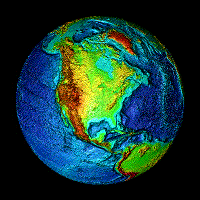 
The Naysayer |
|
On November 29th, 2004, the San Francisco Chronicle published an article entitled, "Scientific maverick's theory on Earth's core up for a test... (click here). The article elicited the following comments from a reader: You quote David Stevenson of CIT as stating that "The idea is based on two very dubious propositions. (a) That uranium (or any heavy element) would naturally go to the center of the Earth. This is almost certainly untrue. It is a misunderstanding of chemistry and statistical physics at a very fundamental level. ..." I have never heard of "statistical physics". I guess my misunderstanding is more than just fundamental....Would it be possible for you to publish a follow-up story expounding on Stevenson's statement? What are we misunderstanding? The author of the article, Keay Davidson, asked J. Marvin Herndon to respond. Herndon's response follows: In August 2002, Discover magazine pierced something like a cloak of silence created by members of the geo-science community. Suddenly, scientists in other fields and ordinary people throughout the world found out about my work. Some scientists confirmed my calculations and others began to extend the concepts, for example suggesting antineutrino detection as a means of verifying the georeactor. Spontaneous debates sprang up on the Internet, and people – ordinary people – wrote to suggest the sort of scientific investigations that scientists should have been proposing. One thing rang loud and clear: People everywhere want to know about their world and to be a part of or witness to the debate about it. I welcome your email and will answer it truthfully and as precisely as possible. I personally believe that because of their education and/or gifts, scientists should have responsibilities to others. Scientists should, I believe, at all times be truthful and should never use their knowledge of science to deceive others. Moreover, scientists, I believe, have the responsibility to share their knowledge and to maintain the principles of science which make possible the determination of a kind of truth about nature that transcends human opinion. Regrettably, not all who call themselves scientists adhere to such standards. The following statements refer to your question about David Stevenson’s quote: (1) If a scientist has any serious disagreement, he/she should publish it in the literature, with all supporting documentation, in circumstances under which I might respond with full documentation. No one, including David Stevenson, has attempted to do that. If Stevenson truly believes that I have made some misunderstanding, he should provide the documentation. He won’t, because he can’t. My work is on solid footing. (2) Statistical physics is a fancy, important-sounding term that is completely irrelevant for the scientific considerations involved. A term more appropriate to the subject is metallurgical thermochemistry and that, I assure you, is a different animal entirely. Permit me to explain briefly the primary considerations involved. Whether an element remains dissolved (at high temperature) in the Earth’s fluid core or becomes part of the silicate (oxide) mantle is a function of the available oxygen at the time the Earth formed. I have shown that the inner 82% of the Earth is like an enstatite chondrite meteorite which formed under such oxygen-limited circumstances. Because oxygen was so limited at formation, there was not enough for some of the elements that would normally prefer to go with oxygen into the mantle. Some of those ended up in part in the core. (Some Ca, Mg, Si, U for example). These elements tend to be incompatible in an iron alloy and upon cooling will precipitate out as soon as possible. That’s what appears to have happened. The calcium and magnesium precipitated as CaS and MgS and floated to the top of the core. The U precipitated (I suspect) as US and went to the center, being the most dense. The silicon precipitated as nickel silicide and went downward to form the inner core. I have tried WITHOUT SUCCESS to interest scientists (whose multimillion dollar high pressure laboratories are funded with taxpayer funds) to verify these things, and to learn more in the process. You ask a most intriguing question: “What are we misunderstanding?” |